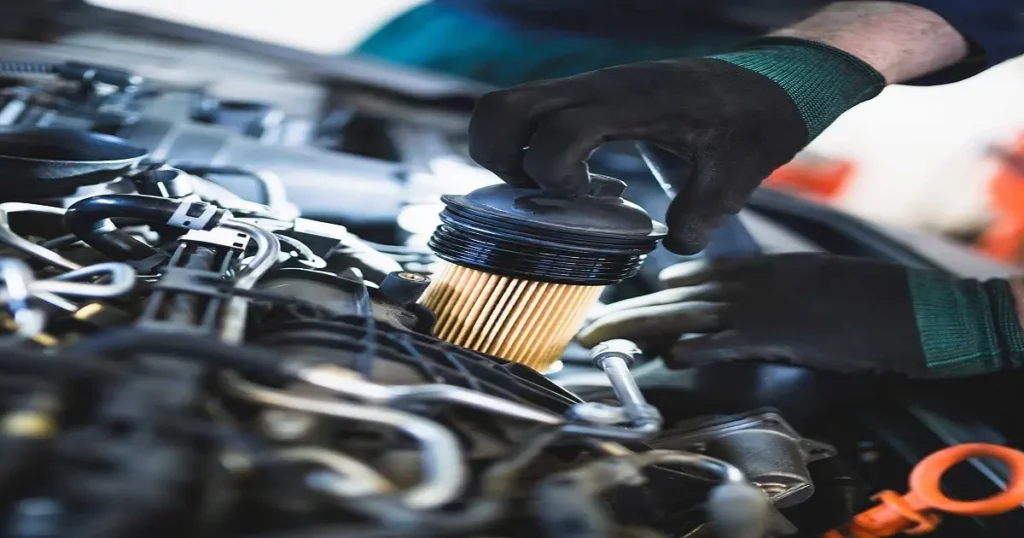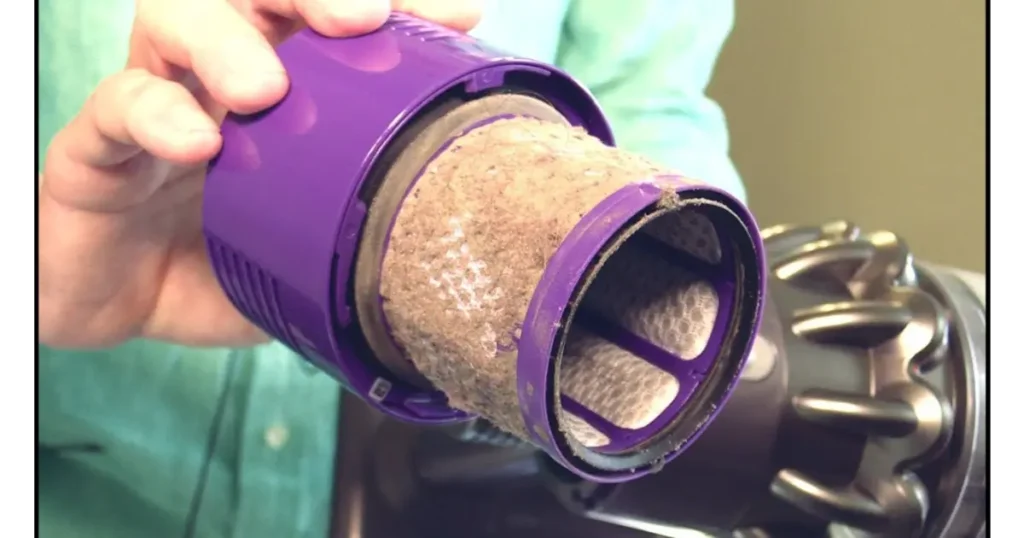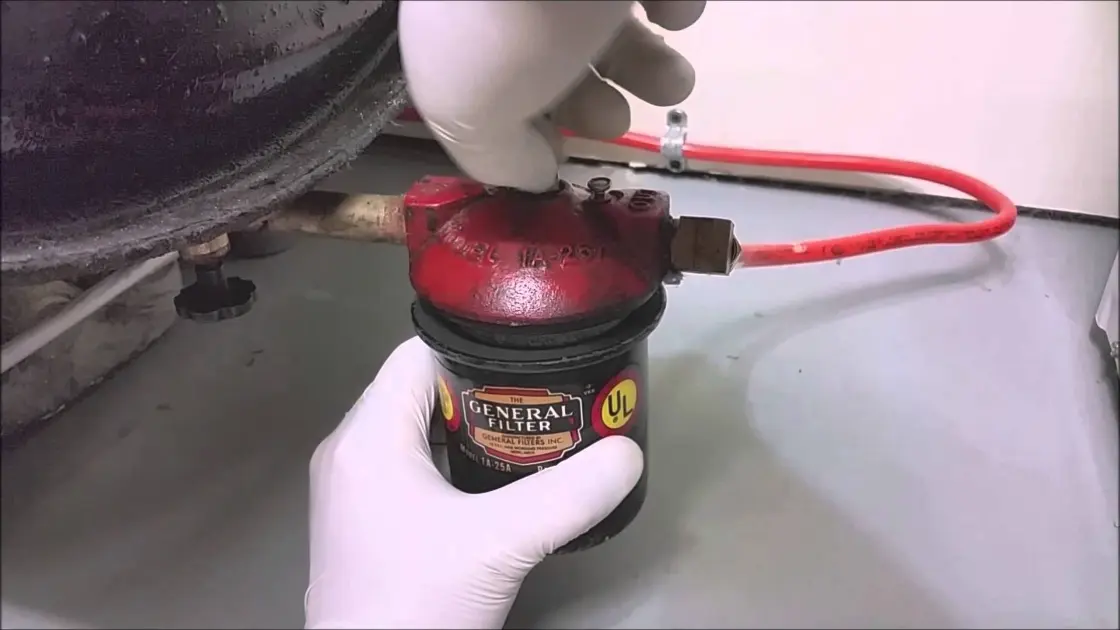Keeping the filter on an outside oil tank clean is crucial for maintaining efficiency and preventing potential problems. Let me walk you through the steps in a way that’s easy to grasp.
Get Ready for the Task: First, you’ll need to grab a few tools. Your go-to items are a wrench, a new filter, some rags, and a bucket. Don’t forget to wear gloves – it can get pretty messy!
Shut It Down: Before you dive in, make sure to turn off the oil supply. This step’s a no-brainer, but it’s easy to forget when you’re all geared up to get your hands dirty.
Locate the Filter: Now, where’s that pesky filter? It’s usually found near the tank or at the burner. Once you spot it, you’re ready for the real action.
Loosen Up: Use your wrench to loosen the filter gently. It’s a bit like opening a jar of pickles – sometimes, you’ve got to give it a good twist. Take it easy; you don’t want to break anything.
Out with the Old: Once it’s loose, remove the filter. It’s probably looking worse for wear – all gunky and grimy. Place it in the bucket if it’s dripping – no one wants an oil spill on their hands!
Clean as a Whistle: Grab those rags and clean around the area where the filter was. You want it as clean as a new pin before putting in the new filter. This step is crucial – like brushing away the crumbs before icing a cake.
In with the New: Time to pop in the new filter. It should fit snugly as a bug, just like the old one. Make sure it’s tight, but don’t go overboard – you don’t want to be at it with a wrench next time!
Finishing Touches: It’s time to turn the oil supply back on with the new filter. Please give it a quick check to ensure there aren’t any leaks. Is everything looking good? Pat yourself on the back – you’ve done a bang-up job!
Introduction: Essential Maintenance for Your Outside Oil Tank
Regarding maintaining your home, some tasks might not be as obvious but are just as crucial for ensuring efficiency and safety. One such task is cleaning the filter on an outside oil tank.
This task might seem daunting or too technical, but it’s vital to maintaining your home’s heating system. Regular cleaning of your oil tank filter ensures your heating system runs smoothly, preventing inconvenient breakdowns and costly repairs.
The oil tank filter, a small but mighty component, plays a significant role in the overall operation of your heating system. It’s responsible for keeping the oil that flows into your burner free of debris and impurities.
Over time, this filter can become clogged with particulates, affecting the efficiency of your heating system and potentially leading to more significant issues.
What Does ‘Cleaning the Filter on an Outside Oil Tank’ Mean?

The phrase How To Clean A Filter On An Outside Oil Tank refers to the process of removing, inspecting, and cleaning or replacing the filter unit of an external oil tank. This oil tank is typically part of a home heating system, where the filter plays a critical role in maintaining the purity and efficiency of the heating oil being used.
Breaking Down the Components:
The Oil Tank is an outdoor storage unit for heating oil. These tanks come in various sizes and are crucial for homes with oil-fired heating systems.
The Filter: Located along the line between the tank and the furnace, this filter removes impurities and particulates from the oil. Its primary function is to prevent these contaminants from entering the furnace and causing damage or inefficiency.
The Cleaning Process: This involves several steps, including shutting off the oil supply, removing the filter, cleaning or replacing it, and then reinstalling it. The process ensures that the heating system operates efficiently and safely.
Why is this Process Important?
Cleaning the filter is not just about maintaining the heating system’s efficiency; it’s also a safety measure. A clogged filter can lead to poor performance of the heating system, higher fuel consumption, and even the risk of breakdowns or hazardous situations.
Regular cleaning or replacing the filter ensures that the heating oil is free of contaminants, which helps prolong the heating system’s life and efficiency.
| Aspect | Importance | Benefit |
| System Efficiency | A clean filter provides an unobstructed flow of oil, which is vital for efficient heating system operation. | It enhanced performance and fuel Economy. |
| Preventing Breakdowns | Removing clogs and contaminants reduces the strain on the heating system. | It has decreased the likelihood of costly repairs and system downtime. |
| Longevity of the System | Regular cleaning of the filter contributes to the overall health of the heating system. | Prolong the heating system’s lifespan, saving money in the long run. |
| Safety | A clogged filter can lead to issues that pose safety risks, such as leaks or system malfunctions. | Ensures the safe operation of the heating system. |
| Fuel Quality | The filter helps to keep the heating oil clean and free from debris and impurities. | Ensures the oil quality, which is critical for the system’s performance. |
| Environmental Impact | Efficient systems with clean filters burn fuel more completely, reducing emissions. | It helps in reducing the environmental footprint of the heating system. |
Step-by-Step Guide: Cleaning Your Outside Oil Tank Filter
Cleaning the filter of an outside oil tank is a straightforward process that can be broken down into manageable steps. Here’s how you can ensure that your heating system continues to run smoothly and efficiently:
1. Preparation and Safety First:
- Tools Required: Gather the necessary tools, including a wrench, a new filter (if replacement is needed), rags, and a container for any oil spillage.
- Safety Measures: Wear gloves and ensure you work in a well-ventilated area. Safety is paramount when dealing with oil.
2. Shutting Off the Oil Supply:
- Locate the valve on your oil tank and turn it off. This step is crucial to prevent oil from flowing while changing the filter.
3. Locating and Removing the Filter:

- Find the filter, typically housed in a canister near the tank or along the line to the furnace.
- Use the wrench to loosen and remove the filter gently. Be prepared for some oil spillage and have your container ready.
4. Inspecting and Cleaning:
- Examine the old filter for any excessive clogging or damage.
- Clean the filter thoroughly with a suitable solvent and let it dry if reusable. If it’s disposable, prepare the new filter for installation.
5. Reinstalling the Filter:
- Whether replacing the filter with a new one or reinstalling a cleaned one, ensure it is fitted correctly and securely.
- Tighten the filter but avoid over-tightening, which can damage the seal or threads.
6. Cleaning Up and Restarting the System:
- Clean any spilled oil and dispose of the old filter (if replaced).
- Turn the oil supply back on and check for leaks around the filter area.
- Restart your heating system and observe if it operates smoothly.
7. Regular Maintenance:
- Regularly check and clean the filter, especially before the colder months start. This ensures your system remains efficient and reduces the risk of unexpected breakdowns.
- Home Heating Maintenance: This phrase can be included to emphasize the broader context of maintaining a home heating system, of which cleaning the oil tank filter is a part.
- Oil Tank Efficiency: This can be used to discuss the benefits of cleaning the filter, highlighting how it improves the overall efficiency of the oil tank.
- Heating System Safety: This keyword fits well when discussing the importance of regular maintenance for the safety of the heating system.
- DIY Oil Tank Care: This phrase can be used to address homeowners who prefer to manage their oil tank maintenance themselves.
- Preventive Maintenance for Oil Tanks: This can be included to discuss the broader topic of preventive maintenance practices for oil tanks.
- Oil Filter Replacement: Applicable when discussing replacing the filter instead of cleaning it.
- Heating Oil Contamination: This keyword can be used when explaining the role of the filter in preventing contaminants from entering the furnace.
- Oil Tank Inspection: Relevant when discussing the initial steps of examining the filter before deciding to clean or replace it.
Key Takeaways:
Regular Maintenance is Key: Regularly cleaning or replacing the oil tank filter is essential for the efficiency and safety of your home heating system.
A Simple Yet Crucial Task: While it might seem daunting, cleaning the filter is straightforward and can prevent costly repairs and system inefficiencies.
Safety and Preparedness: Always prioritize safety by turning off the oil supply and wearing protective gear.
Benefits of Clean Filters: A clean filter ensures smooth operation, prevents contaminants from entering your furnace, and enhances overall system efficiency.
DIY Approachable: This task is manageable for most homeowners and can be a rewarding DIY project.
FAQs:
How often should I clean my outside oil tank filter?
It’s recommended to check and clean it at least once a year, preferably before the heating season begins.
Can I clean the filter myself, or should I call a professional?
While you can clean the filter yourself, it’s always safe to call a professional if you need clarification or are uncomfortable with the process.
What are the signs of a clogged oil tank filter?
Look out for poor furnace performance, increased oil consumption, or unusual noises from the heating system.
Can a dirty filter affect my heating system’s efficiency?
Yes, a clogged filter can reduce efficiency and lead to higher fuel consumption and strain on your system.
Is it better to clean or replace the filter?
It depends on the filter type and its condition. If it’s reusable and not too worn out, cleaning is sufficient. Otherwise, replacement is recommended.
Conclusion:
Maintaining the filter of your outside oil tank is a critical yet manageable task that plays a significant role in the health and efficiency of your home heating system.
By following the outlined steps for cleaning or replacing the filter, homeowners can ensure their system runs smoothly, avoiding unnecessary breakdowns and optimizing fuel consumption.
This process, while straightforward, emphasizes the importance of regular upkeep and preventive maintenance in-home care. Not only does a clean filter contribute to a more efficient heating system, but it also ensures the longevity and safety of the entire unit.
Whether you’re a seasoned DIY enthusiast or a beginner, taking the time to understand and perform this task can lead to significant long-term benefits for your home’s heating system.









